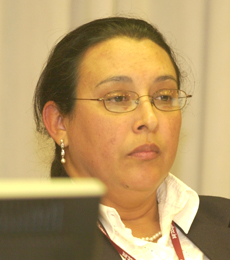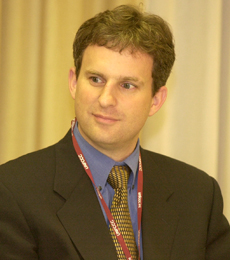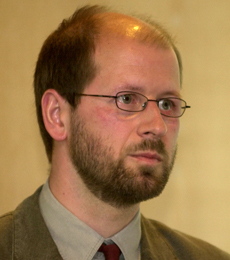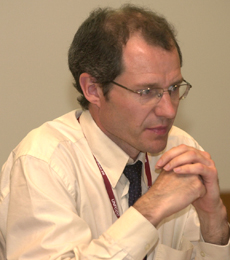|
|
|
|
Lessons learned from greenhouse gas inventories capacity-building in Central America
Presented by the US
|
|
|
 |
|
|
|
Carey Yeager, US Agency for International Development (USAID), explained that USAID’s Regional Climate Change Programme is coordinated with other agencies through the Central American Commission for Environment and Development in partnership with the US Environmental Protection Agency (EPA). Mirza Castro, National Program on Climate Change, Honduras, said the US-Central American “greenhouse gas inventory project” aims to improve inventories, through: supporting the development of emission factors; technical training activities; and the development of tools for adaptation to local circumstances.
In discussing the national reporting guidelines for non-Annex I parties, Javier Hanna Figueroa, UNFCCC, outlined tools that non-Annex I parties can draw on in preparing inventories. Bill Irving, EPA, discussed the template approach to building inventory management capacity, and emphasized that the process of preparing a national inventory report can be as useful as the report itself.
Marina Stadthagen, Ministry of the Environment and Natural Resources of Nicaragua, said the greenhouse gas inventory project has helped to: improve the quality of greenhouse gas data in the agricultural and land use sectors; foster the creation of a national inventory system; and strengthen institutional frameworks for inventory development. René López, Climate Change Unit of Panama, said Panama’s participation in the greenhouse gas inventory project included work on: climate data; crop statistics; livestock data; a digital soil map; a 2000 land cover map; and a land-use database. Stephen Ogle, Colorado State University, demonstrated a greenhouse gas inventory software tool developed for use in the agricultural and land use sectors in Central America.
|
|
| Marina Stadthagen, Ministry of the Environment and Natural Resources of Nicaragua, said that the US-Central American greenhouse gas inventory project is timely for Nicaragua as it begins work on its second national communication |
|
|
|
|
Discussion: A representative from Guatemala noted that ongoing issues include: calculating emissions to identify new sources for 2000; identifying key actors; developing institutional arrangements; and training experts in inventory development and the use of reporting guidelines. A Costa Rican representative said the capacity to monitor greenhouse gas emissions is essential for developing climate mitigation policies. Another participant asked about replicating the project beyond Central America.
|
|
|
 |
|
 |
|
|
|
Mirza Castro, National Program on Climate Change,
Honduras
, said the US-Central American greenhouse gas inventory project supports the development of emission factors, technical training activities, and the development of inventory tools
|
Bill Irving, US EPA, emphasized that the US-Central American greenhouse gas inventory project involves Central American and US experts working together to improve inventories
|
|
|
|
|
|
|
|
|
|
|
|
|
|
|
|
|
|










